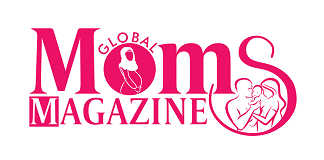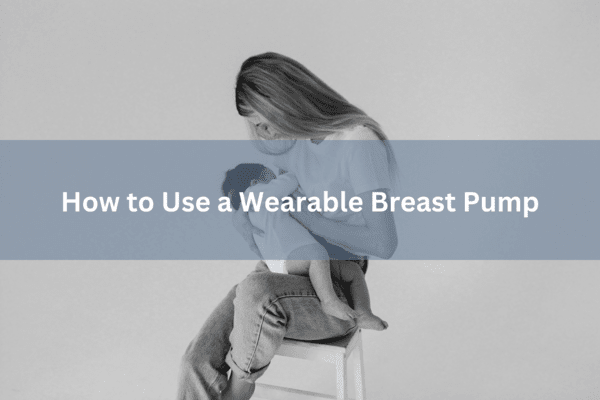Juggling motherhood and a busy schedule? You’re not alone. Nearly 85% of moms who breastfeed turn to pumps at some point. Some do it to build a stash. Others want to maintain supply while away from the baby. The extra freedom offered by a breast pump is what truly hooks most mothers, regardless of their reasons for using one. (1)
Enter wearable breast pumps. These devices are a game-changer for busy moms. Why? It allows you to pump virtually anywhere, anytime! Ditch the bulky motor unit and the long cables. Unlike traditional pumps, wearable ones won’t tie you down to the AC power outlet.
Looking to try wearable breast pumps? This guide has the answers! Discover everything you need to know about using them effectively below.
Your wearable breast pump toolbox

It’s important to be familiar with the key players in the wearable pump kit first. The best breast pump typically includes:
- Flanges: These are funnel-shaped components. They fit over breasts, so they create a seal to draw milk. Of course, you want the pumping process to be as comfortable as possible. The good news is that flanges come in various sizes. You can surely find something that fits and makes the process more efficient.
- Collection cups: These are where your precious liquid gold goes. They connect directly to the flanges. Collection cups also make milk volume tracking a breeze with liquid volume markings.
- Motors: It’s the heart of your pump. It generates the suction required for drawing milk. And wearable pumps are known for their compact, quiet motors.
- Tubes (optional): Some wearable pumps are tubeless. But there are others that still incorporate tubes in their design. These connecting tubes, though, are usually shorter than that of traditional pumps.
- Connectors: How do wearable pumps ensure a seamless pumping experience? It’s through connectors that link all components together.
- Additional accessories: You might also find extras in some pump models like carrying bags and rechargeable batteries.
Your chosen pump’s manual will include specific assembly instructions. Most pumps have a user-friendly design. Everything clicks or locks into place, making the assembly easier and more secure.
With the global breast pump market projected to reach USD$5.2 billion by 2030, we can expect more innovations to come that make pump operation easier and more efficient. But, of course, if you encounter any difficulties, you can always reach out to the manufacturer for further guidance. (2)
Mastering your wearable pump routine
It’s time to put your wearable pump arsenal to the test. Navigate a successful pumping section by following this step-by-step guide:
1. Preparing for a pumping session
-
- Cleanliness is key: Wash your hands before handling any pump parts. Use soap and warm water for at least 20 seconds. The last thing you want is to transfer bacteria from your hands to the pump and eventually to your precious breast milk.
- Find your zen zone: Do you know that the pumping process becomes more efficient when you’re free from distractions? That’s why it’s important to choose a comfortable and private space. It should allow you to relax and focus on pumping.
- Embrace the support: You know what’s your pumping BFF? It’s a well-fitting, supportive bra! Why? It holds everything comfortably in place. It would mean optimal suction. It also prevents leaks.
2. Perfecting placement
With clean hands, gently center the flanges over your nipples. The goal is to position them comfortably within the flange tunnel.
Then, create a snug yet comfortable seal around your breasts. How to do it? Just press the flange edges against your skin gently. A good seal makes the milk collection efficient.
Don’t forget that comfort equals a successful pumping session. So, adjust the flanges until you find the best fit.
3. Operating the pump
-
- Turning it on: Your chosen pump’s manual should also have instructions on how to turn your device on. It’s mostly just a simple on/off button. There could also be additional buttons for settings adjustment.
- Mimicking nature: Many wearable pumps also offer different pumping modes. Do you want to stimulate milk letdown? Set it to massage mode. Do you want it to mimic your baby’s natural sucking pattern instead? Set it to expression mode for efficient milk collection. Experiment with the available modes. The goal is to find what works best for you.
- Suction control: Wearable pumps don’t only allow moms to mimic nature. Most of them also allow for suction level adjustment. Take advantage of this feature. Start with a gentle setting. Then, gradually increase the suction level. Do it until you find the suction setting that promotes milk flow without the discomfort.
4. Emptying and storing collected milk
-
-
- Milk transfer: Once you’ve finished pumping, carefully transfer the collected milk. Move it from the collection cups to storage containers. Just make sure to opt for BPA-free containers. They’re specifically designed for breast milk storage.
- Proper storage guidelines: Did you know that you can store fresh breast milk in the refrigerator for up to four days? If you want to keep the milk for longer than that, freezing is recommended. When frozen in a deep freezer, breast milk can last for up to six months. In a standard freezer compartment, the milk can last for up to 12 months. (3)
- Cleaning and sanitizing pump parts post usage: After each use, disassemble your pump and thoroughly clean all parts. Make sure to follow the manufacturer’s cleaning instructions. You wouldn’t want bacteria to grow on your pump, right? Mastering how your wearable pump functions means you can make the most out of the device. Your bub will also thank you for it, of course.
-
Final thoughts
Congratulations on mastering the art of using wearable pumps! Remember that consistency is key to a successful pumping journey. Think of every pumping session as your baby’s feeding schedule. It should be consistent!
Consider using pumping apps too. They track your pumping session progress, including milk output and your bub’s feeding patterns. You can then use these pieces of information to identify any areas for adjustment.
References:
- “Pumping Milk and Nursing Are Not the Same”, Source: More Women Are Pumping, but Research Is Lacking – The Atlantic
- “Using a breast pump at work used to require privacy. Not anymore.”, Source: Why more mothers are using breast pumps, as cost and types evolve – Washington Post
- “Proper Storage and Preparation of Breast Milk”, Source: Proper Storage and Preparation of Breast Milk | Breastfeeding | CDC

